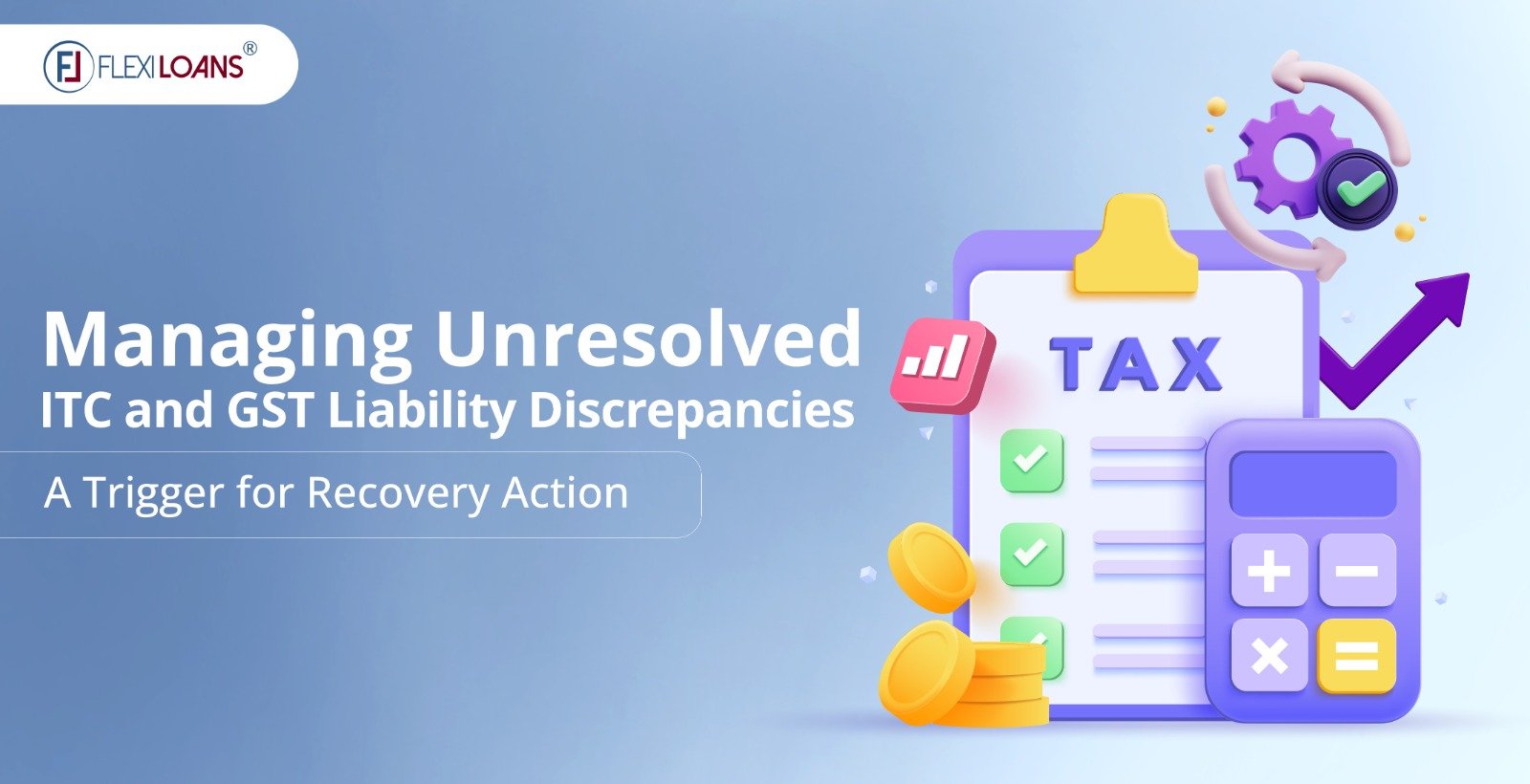Oct 25, 2023
Sep 30, 2025

Overview:
GST is a major tax reform, which aims to provide a smooth flow of credit to taxpayers. Over the past year, many states’ GST departments have issued notices regarding discrepancies in Input Tax Credit (ITC). These notices ask taxpayers to explain the differences between the ITC claimed in GSTR-3B and the ITC available in GSTR-2A.
This situation raises an important question for both taxpayers and professionals: Can tax authorities deny input tax credit solely because of a mismatch between the ITC in GSTR-3B and what is shown in GSTR-2A/2B?
Recent Update on GST Input Tax Credit (ITC)
- The government portal has now introduced a new advisory regarding the reporting of opening balance for GST ITC reversal. You can find more information on this update by visiting the portal.
- Attica Gold Private Limited’s case order has been issued by the Karnataka AAR. According to this order, expenses such as rent, advertisement expenses, commission, and professional expenses are eligible for ITC under GST under the marginal scheme. You can read the full order for details.
- The rules are as follows:
In sub-rule (4), in clause (b), the words ‘input tax credit in respect of’ shall be added after ‘the details of.’
- If a registered person avails input tax credit for any inward supply of goods or services (excluding reverse charge supplies) but fails to make the payment to the supplier, including the tax amount, within the specified time limit (as per the second proviso to sub-section (2) of section 16), they must pay an amount equal to the input tax credit availed, along with applicable interest under section 50. This payment should be successful when submitting the return in FORM GSTR-3B for the tax period immediately following 180 days from the invoice issue date.
- If the registered person later pays the amount owed, including the tax, to the supplier, they can re-avail the input tax credit mentioned in sub-rule (1).
- In clause (c), the words ‘and the balance amount of input tax credit shall be reversed in FORM GSTR-3B’ shall replace the words ‘and shall be of focus in FORM GSTR2
What is GST Input Tax Credit and How Does it Impact Businesses?
‘Input Tax Credit’ or ‘ITC’ refers to the Goods and Services Tax (GST) that a taxable individual pays when purchasing goods and/or services for business use, either presently or in the future. GST input tax credit applies to a taxable entity, meaning it covers the IGST and CGST under the CGST Act and IGST and SGST under the SGST Act for every supply of goods and services put to use for its consumption in the business.
In simple terms, an input tax credit allows a company to subtract the tax it paid on inputs when calculating the taxes, it owes on its outputs.
To reduce the GST payable on their sales, taxable individuals can apply the value of ITC, but only after meeting specific conditions. These conditions, stipulated by the GST law, closely resemble those in place before the introduction of GST, though a few new conditions add up, including the requirement to consider GSTR-2B. These rules are straightforward but can be strict in their application. However, it’s essential to ensure that the entity’s books of accounts align with the filed returns, and reconciliation can help achieve this.
What is Block Credit under GST?
Block Credit under GST refers to the part of input tax credit that a taxpayer cannot claim due to specific conditions in the GST law. This includes items like motor vehicles, food, catering, health services, and works contract services for immovable property construction, among others.
Impact of Block Credit on GST Liability:
Block credit limits a taxpayer’s ability to claim Input Tax Credit, resulting in increased GST liability. This means taxpayers must pay more GST from their funds as they cannot fully offset their GST liability with ITC. The extent of this impact depends on the applicable block credit percentage and the eligible ITC.
Why the reconciliation of returns with the books of accounts is necessary
You should reconcile your returns with your books of accounts for several important reasons:
- To prevent missing out on claiming Input Tax Credit (ITC): Sometimes, organizations forget to record the invoices they receive. This can result in losing out on ITC and, in the end, paying more tax than necessary. A timely reconciliation process ensures that you utilize all available ITC.
- To establish robust internal control: Matching supplier returns with your books of accounts is a sign of strong internal control within your organization. Reconciliation helps promptly address any discrepancies in the taxpayer’s records.
- As part of the audit procedure: During an audit, an auditor can easily compare the inward supplies as per your books of accounts with GSTR-2B or GSTR-2A. If there are discrepancies, auditors may ask you to reconcile them. Therefore, taxpayers should conduct monthly reconciliations and keep the data ready for audits.
- To avoid receiving Notices from the Tax Department: Any discrepancies in your records may trigger notices from the Tax Department, potentially resulting in penalties. To prevent this, it’s essential to perform monthly reconciliations and take appropriate action to resolve data mismatches.
What you must do if there is either an excess or an insufficient credit in GSTR-2B or GSTR-2A in comparison to GSTR-3B?
Under GST Law, it’s crucial to reconcile your returns—specifically, GSTR-2B or GSTR-2A with GSTR-3B. You can claim Input Tax Credit (ITC) for a specific invoice only if either GSTR-2B or GSTR-2A includes that invoice. This matching process helps the tax department verify whether all transactions that occurred within a particular timeframe are accurately recorded and reflected in the summary return, GSTR-3B.
The table below outlines the necessary actions to take in case of discrepancies:
| Sr.No | Credit Status | Return | Situation | What to Do? |
| 1. | Declaration of excess credit. | GSTR-2A | If the recipient doesn’t claim ITC in GSTR-3B | – The recipient should claim the missing ITC in the month when they identify the discrepancy. |
| The supplier exhibits the excess of outward supplies in GSTR-1. | -The supplier should rectify this in GSTR-1 of the month when they identify the discrepancy. | |||
| 2. | Declaration of less credit. | GSTR-2A | The supplier failed to upload the invoice. | – The supplier must rectify this in the return of the month when they identify the discrepancy. If the supplier doesn’t do so, the recipient’s ITC will increase into the output tax liability in the next month. |
| The credit duplicate, that the recipient claims in GSTR-3B. | – If the recipient has already corrected this, the recipient shouldn’t take any action. If not, the excess recipient’s ITC will increase into the output tax liability of the next month. |
What should you do if the credit in GSTR-2B/3B doesn’t match your books of accounts?
In this scenario, as a taxpayer, you should carry out two important reconciliations:
1. Reconciliation between GSTR-2B/2A and your books of accounts:
GST reconciliation is a term that encompasses any comparison of two or more data sets in the GST system. One specific type of GST reconciliation is the GSTR-2A/GSTR-2B reconciliation, where you compare the generated GSTR-2A/GSTR-2B for a tax period with the data in your purchase register. This process is crucial to identify if some invoice data is missing from the statement because suppliers didn’t file it on time. This process helps detect errors in invoices and ensures that taxpayers make GST payments accurately and promptly, preventing both overpayment and underpayment of GST. Additionally, this reconciliation ensures that you claim Input Tax Credit (ITC) correctly, preventing penalties for incorrect practices.
In this case, you need to actively manage the reconciliation process because the data in GSTR-2A/2B comes directly from your vendors. Whenever a vendor submits their GSTR-1 or makes changes to it, the data undergoes modifications, necessitating a fresh reconciliation.
Step 1: First, you identify the invoices that are the recordings in your books of accounts but are not present on the GST portal (GSTR-2A). Conversely, identify the invoices available on the portal (GSTR-2A) but not recorded in your books.
Step 2: Invoice discrepancies can occur for various reasons:
– The supplier may have failed to upload invoice details in GSTR-1, but you, as the recipient, recorded them in your books of accounts and claimed Input Tax Credit (ITC) in GSTR-3B in a later month when the supplier finally uploads the invoice.
– There could be duplicate claims of ITC in your books of accounts.
– The supplier might have not filed GSTR-1 or provided an incorrect GSTIN while filing GSTR-1.
– Discrepancies might arise due to differences in the timing of invoice recording.
Step 3: Once you’ve identified these mismatches, take appropriate actions as outlined in the table above to resolve them effectively.
A look into the reconciliation of GSTR-3B and books of accounts
You should actively reconcile your GSTR-3B with your books of accounts, and this process involves using static data that your organization prepares and records.
Step 1: First, ensure that all the GST challans paid by your organization are accurately recorded in the corresponding Payables ledger.
Step 2: Compare the Input Tax Credit (ITC) claimed in GSTR-3B with the ITC recorded in your books of accounts. If there’s a discrepancy, make the necessary adjustment entry.
Step 3: Compare the GST output claimed in GSTR-3B with the corresponding record in your books of accounts. Again, if there’s a mismatch, adjust it through an entry.
Step 4: Verify that the Electronic Credit Ledger aligns with the Trial Balance.
Step 5: If there are any errors in your GSTR-3B, ensure they are rectified in the returns for the following months.
Final Word:
In conclusion, understanding and effectively managing Input Tax Credit (ITC) under GST is essential for businesses to optimize their tax liabilities and comply with regulations. It allows companies to ultimately lead to a more efficient and cost-effective tax structure. Overall, ITC is a valuable tool that can significantly benefit businesses when utilized correctly within the framework of GST regulations.
Furthermore, if you need a convenient business loan or an MSME loan, you should approach FlexiLoans, the online lending platform in India. FlexiLoans provides various quick business loan solutions, including those tailored for women entrepreneurs, collateral-free loans, small business loans, machinery loans, and term loans.
You can visit FlexiLoans to assess your eligibility for a business loan and take advantage of competitive interest rates. Applying for a business loan has become simpler than ever before!
Adjustment of Input Tax Credit FAQs
As A person who registers (including an Input Service Distributor), you can claim an Input Tax Credit based on the following conditions:
-You must possess a tax invoice issued by the supplier of goods or services or both, and a debit note issued by a supplier.
-You must have received the supply of goods or services or both.
-You must have paid the tax for it in cash or as input tax under section 41 of the GST Act.
-You must have filed proper returns under section 39 of the GST Act.
No, you cannot claim block credit under any circumstances. The GST law specifies the conditions for claiming input tax credit. If these conditions are not met, you cannot claim input tax credit.
Examples of block credit under GST include:
1. Motor vehicles and other conveyances (unless they are put to use for making further supplies of such vehicles or conveyances or used for transportation of goods).
2. Expenses related to food and beverages, outdoor catering, beauty treatment, health services, cosmetic and plastic surgery, club memberships, health, and fitness centres.
3. Costs associated with services like rent-a-cab, life insurance, and health insurance.
4. Travel benefits given to employees for vacations such as leave or home travel concession (LTC).
5. Services related to works contracts used for the construction of an immovable property (other than plant and machinery).
No, you cannot claim Input Tax Credit (ITC) for goods that you lose, stolen, destroyed, or written off. Additionally, ITC for goods given as gifts or free samples is also not allowed [Section 17(5)(h)].
According to Section 54(3) of the CGST Act, 2017, a refund of accumulated ITC is available when credit accumulates due to an inverted duty structure. This includes cases where suppliers make supplies to merchant exporters.
You may claim a GST refund for various reasons, such as excess cash balance in the electronic cash ledger, taxes paid by mistake, or accumulated Input Tax Credit (ITC) that cannot be put to use for tax payments due to zero-rating sales or an inverted tax structure.
When there is a change in the constitution of a registered person, the unutilized input tax credit in their electronic credit ledger will transfer to the new entity( there is a specific provision for the transfer of liabilities (Section 18(3) of the TSGST Act, 2017).)
Yes, they can claim ITC for inputs in stock, semi-finished or finished goods, and capital goods (with a prescribed reduction) on the day just before they switch from the composition scheme. The calculation method is in TSGST Rules, but the invoices for these supplies must not be over a year old.
Deprecated: Function get_the_author was called with an argument that is deprecated since version 2.1.0 with no alternative available. in /var/www/html/wordpress/flexiloans.com/blog/wp-includes/functions.php on line 6114
Deprecated: Function get_the_author was called with an argument that is deprecated since version 2.1.0 with no alternative available. in /var/www/html/wordpress/flexiloans.com/blog/wp-includes/functions.php on line 6114







